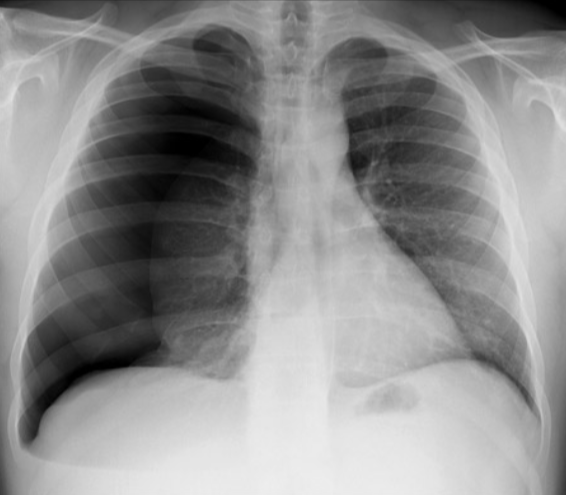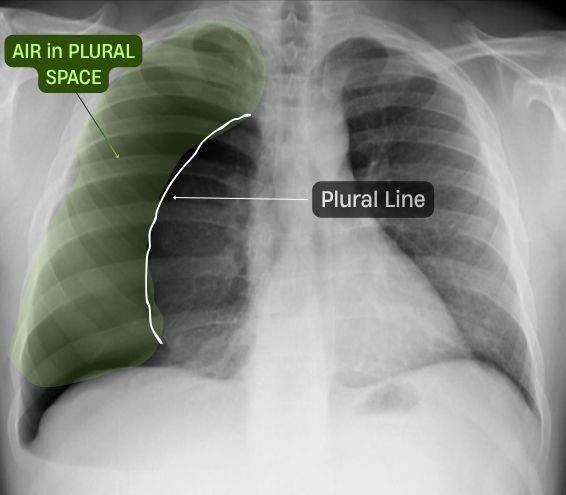Right Sided Tension Pneumothorax (Early)
Published on June 16, 2025


Clinical Context
26 Y/M Presented with Chest trauma and complaints of Chest pain, Shortness of breath, tachypnea and tachycardia.
Interpretation Steps
1. Image Quality
Good inspiration, exposure, and no rotation. All anatomical landmarks are clearly visible.
2. Airway
The trachea is deviated to the left, indicating possible mediastinal shift due to increased intrathoracic pressure on the right.
3. Breathing
There is a complete absence of lung markings in the right hemithorax, with a visible pleural line demarcating the collapsed lung — classic for a right-sided pneumothorax.
4. Circulation
The heart and mediastinal structures are shifted to the left. No signs of cardiomegaly.
5. Diaphragm
The right hemidiaphragm is flattened due to air pressure buildup. Costophrenic angles are sharp; no effusion noted.
6. Extras
No visible rib fractures. No foreign bodies, tubes, or devices. Bony thorax appears intact. Soft tissues show no abnormalities.
There is a right-sided pneumothorax with a visible visceral pleural line and complete absence of lung markings peripheral to it. The trachea is mildly deviated to the left, and there is early mediastinal shift suggestive of evolving tension physiology. No rib fractures are seen. The diaphragm appears flattened on the right. Cardiac silhouette is normal in size. No evidence of consolidation or pleural effusion.
Final Diagnosis
Right Sided Tension Pneumothorax (Early)
Teaching Pearls
- Always inspect both lung fields for symmetry and lung markings.
- Tracheal deviation can be subtle — compare to prior X-rays if available.
- Tension pneumothorax is a clinical diagnosis — don’t wait for imaging to treat.
Frequently Asked Questions
Q: What are the radiographic signs of tension pneumothorax?
A: Shift of mediastinum, absence of lung markings, diaphragmatic depression, and contralateral lung compression.
Q: What is the emergency management?
A: Immediate needle decompression followed by chest tube placement.
Q: Can this occur in healthy individuals?
A: Yes — primary spontaneous pneumothorax can occur in tall, thin males during exertion.